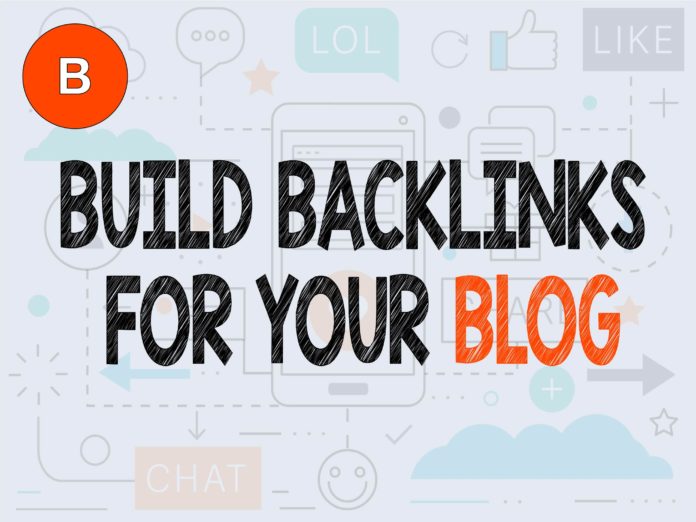How to Build Backlinks for Your Blog From Quality Sites
Do you want to improve the search rank of your blog?
Wondering how to get influential people to link to your cornerstone blog content?
Having multiple high-quality websites link to your blog content demonstrates to search engines that your blog offers valuable information.
In this article, you’ll discover how to get high-quality, authoritative links back to your blog.
How to Build Backlinks for Your Blog From Quality Sites by Maggie Aland on Social Media Examiner.
#1: Publish Content That Is Sourceable
You’re probably already aware of which types of social media posts perform best for your business. For example, you might use an engaging video, aesthetically pleasing images, or inspirational quotes to get followers to like, comment on, and share your posts.
However, the content that gains links from social media is generally different than those examples.
If you want authoritative bloggers, journalists, and publishers to link back to your website, the best way to encourage them is to post content that is positioned as a source, such as an article with original research and data, or a selection of best practices unique to your industry. Those sites will be more likely to link to your article if your research confirms industry standards or debunks industry assumptions.

The best way to get backlinks to your site is to post content that contains original research.
The key is for your social post to be the seed for someone else to write a story about. It’s unlikely that writers will update a previously published article to include your statistic in place of ones already used. However, if your content includes newsworthy information or a statistic people don’t typically think about, they’ll be more likely to write about it and link back to you as the source.
#2: Create an Outreach List of Priority Targets
Now that you know what content you’re going to promote, it’s time to identify writers and journalists you want to prioritize for your outreach. There are a few ways to do this.
Use Twitter Advanced Search
You can find media for free using Twitter advanced search. You can refine your search with keywords, hashtags, places, dates, and more.
For instance, if you own a gym, you might search for #fitlife, #fitnessgoals, and #getfit to find users who are tweeting about fitness. Look through your search results to identify writers who might be a good fit for promoting your article. Look at their profile information, number of followers, and previous tweets.
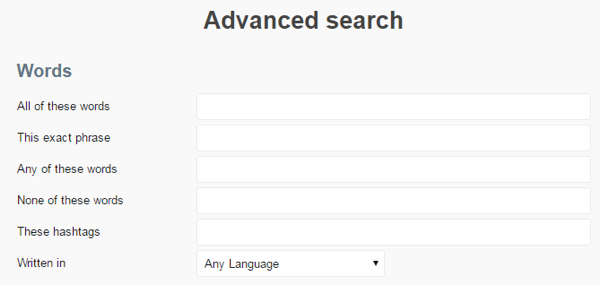
Use Twitter’s advanced search to find writers who might be a good fit for promoting your content.
Find Media Contacts Using a PR Tool
A faster way to find background and contact information on niche-specific media is to use a PR tool like Cision. You can search for media contacts by name, subject, keyword, media type, and more. The software will then pull relevant contacts along with complete profiles that include their areas of expertise, background, Twitter following, and most importantly, contact information.
To illustrate, if you’re looking for journalists who write specifically on the topic of fitness, you’ll see thousands of potential contacts to reach out to, plus a quick summary to help you determine if they’re a good fit for your pitch.
The downside is that this type of tool is costly, so if you don’t do outreach frequently, you may not be able to justify the price.
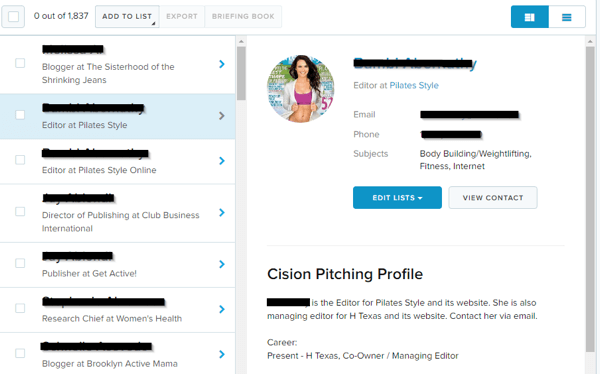
This is a sample profile from Cision.
Set Up Google Alerts for Industry-Specific Keywords
Google Alerts are a great way to see who’s writing articles related to your industry. For example, you might set up an alert for the keyword “gym workout.” You’ll then receive the top articles of the day related to your search term.
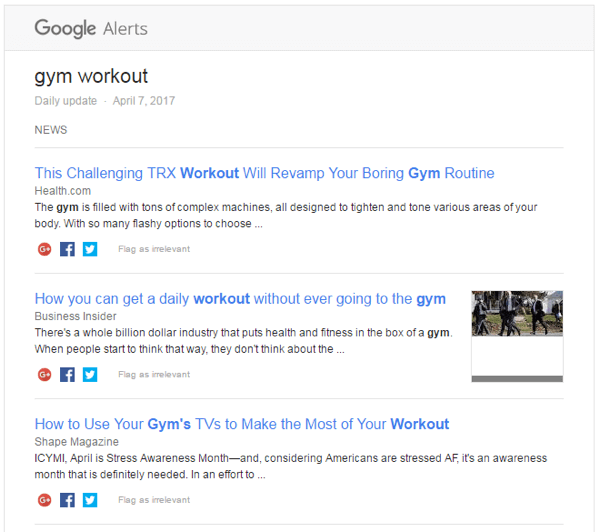
Set up a Google Alert to see who’s writing about your industry.
Click on a link to find the journalist and see if they’re likely to cover a topic related to your industry. You’ll also want to make a note of any contact information you can use to target them on social media (Twitter handle, email address, etc.).
#3: Target Your Prospects With Social Posts That Link to Your Content
Once you’ve researched your targets, it’s time to get social! Your goal is to make the biggest impact with your post by sharing it with people who are most likely to link back to it.
While sharing your sourceable content on your social media channels is a great start, there are a few ways to make an even bigger splash with your target audience.
Promote Your Post With Twitter Ads
Twitter moves quickly, so if you want to increase the chances your post will be seen by the right people, it’s a good idea to pay to promote it. Plus, with Twitter’s advertising dashboard, you can target the specific handles you captured in step 2 of this process; Twitter will then display your ads to people with interests similar to those accounts’ followers. Simply search for users or import a list of Twitter handles into the system.
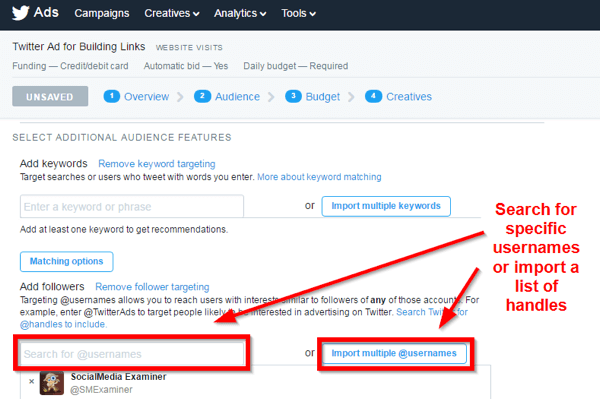
Advertise your content to specific people on Twitter.
Promote Your Post With Facebook Ads
If you have the email addresses and/or phone numbers of the media members you want to target, you can upload their contact information to create a custom audience on Facebook.
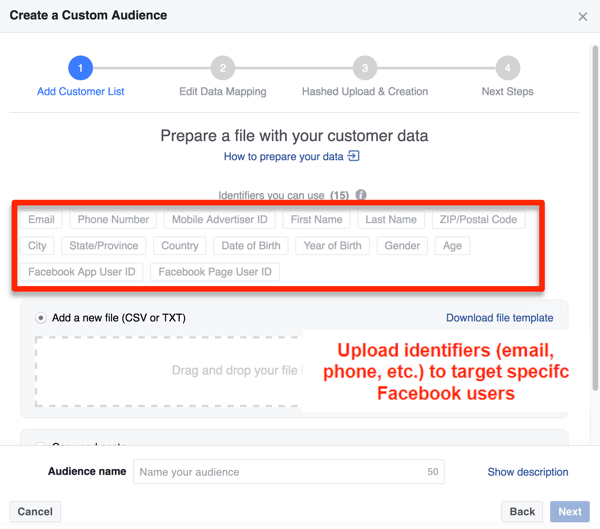
Create a custom audience on Facebook.
If you don’t have this type of information, you can still get pretty granular with whom you target. One way to do that is to serve your ads only to people with specific job titles and places of employment.
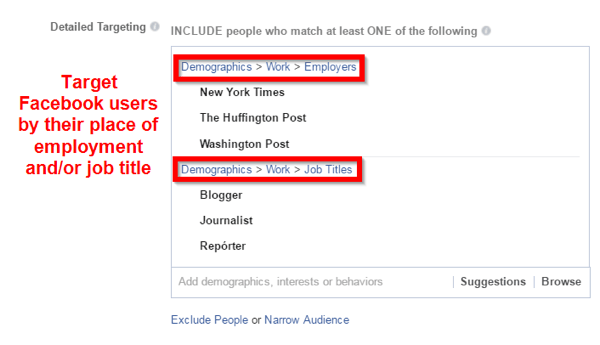
Target Facebook users by their employment information.
This type of targeting ensures your ad will be shown only to people in the media, and even better, only those who work for outlets that often write about your specific niche. And, if you’re on a budget, you can sometimes get credit towards your advertising on Facebook, especially if you’re a first-time advertiser.
Conclusion
Hopefully, by now your ideal audience of writers and journalists in your niche has seen your article and maybe even liked, commented on, or shared it. To increase your chances of having these people write an article and link back to your site, it’s important to nurture your relationships with them.
Because you’ve taken the previous steps, when you message these people (either directly on social media or via email), they’ll likely already be familiar with your brand. Therefore, they’re warm leads and more likely to respond. You may want to offer something in return for linking to your site, such as sharing their article on your social media accounts once it’s published.
With the help of social media, you have another avenue to reach influencers who are likely to write about topics related to your industry. By utilizing this three-step strategy, you can make sure you get the most out of your link-building efforts.
What do you think? Have you tried any of these tactics to get high-quality websites to link to your site? What tips can you offer? Please share your thoughts in the comments below.

















